If your next flight is anything like our last one, you’ll find the lavatory more than a bit cramped. It isn’t your imagination or that you’re getting bigger. Instead, all U.S. airlines have been installing far smaller lavatories on their planes as a way to save money by making room for more seats on income-starved airlines.
Maximizing airline earnings at the cost of passenger comfort.
Airlines are ordering new planes, namely Boeing 737 MAX and Airbus A321neo as fast as possible. Reasons include reduced fuel consumption. In addition, they’re cutting back on legroom, like the 30-inch seat pitch we just encountered on United Airlines. Not only that, they are installing what the industry euphemistically calls “compact” lavatories. As a result of the compact lavs, there’s room for up to two more rows of seats in these narrow-body planes. Where possible, airlines are also retrofitting older planes with these same measures in order to achieve higher earnings.
Airlines claim new restrooms are just a few inches narrower than the predecessors.
The truth is that the old lavatories were bad enough, and there have been endless complaints from passengers, flight attendants, and pilots alike. The net result that sounds great in an airline corporate boardroom just isn’t so wonderful at 30,000 feet. It virtually takes a contortionist or the smallest and skinniest of passengers to not take note of what has just happened. New lavatories take the prior small restrooms down in size by at least 3 inches.
Here’s how “compact lavs” break down on Hawaii flights.
American Airlines, Delta Airlines, and Hawaiian Airlines have incorporated far smaller lavatories from Airbus on their A321neos used for flights to Hawaii in order to add more passenger seating.
Then, on the other primary aircraft used for Hawaii flights, Boeing 737 and 737 MAX, American, Southwest, and United have also implemented compact restrooms from Rockwell Collins.
The new lavs have just a few inches on each side of the commode. Beyond that, the kidney-shaped and sized wash basin is tiny, making it challenging to even wash your hands without getting water everywhere.
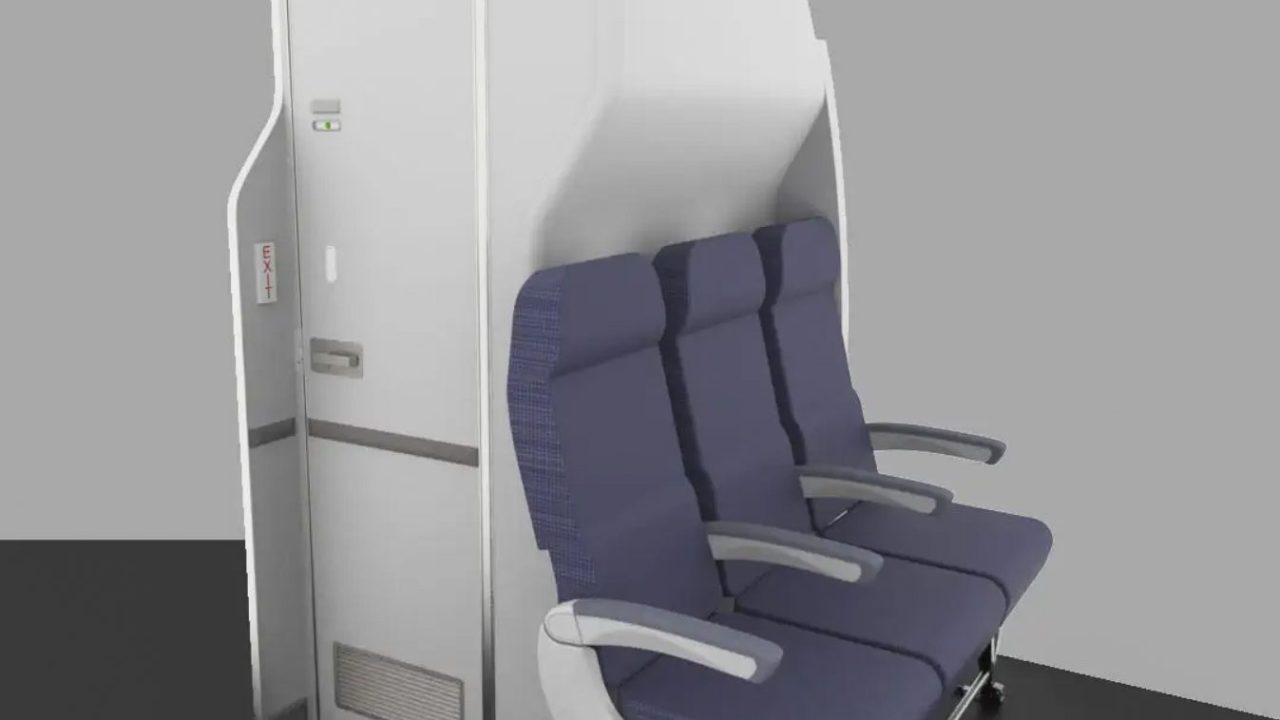

Accessing the lavatory is yet another problem for crew and passengers on these Hawaii flights.
The two lavatories at the rear of the 737 MAX are directly opposite each other. They are located behind the last row of seats and in front of the tiny flight attendant galley.
The aisle isn’t wide enough for the person leaving the restroom to pass the person waiting to use it. The only way to access the lav is for one of the people to step into the galley space first. And that’s hard to do because the flight attendants are back there and they too have nowhere to move. We also felt sorry for those seated in the last rows of the aircraft, since they had to deal with this shuffling of people in a woefully inadequate space.
It’s a disaster for passengers and flight attendants both, and it’s hard to say who we feel worse for actually.
Understanding a “compact” lav.
Collins Aerospace is a leader in compact lavatories. It is owned by the same company, RTX, that includes the troubled engine maker Pratt & Whitney Their 737 space-saving lavs “enable cabin optimization.”
We want to be clear the Collins provides a wide variety of large and small, innovative lavatory options and it is the airlines that appear to be driving the choices here.
Their lavs can provide “up to seven additional inches of cabin space.” The company says that in concert with “slight cabin modifications,” these can contribute to additional comfort (seat pitch), economy (more seats), or an added premium econony cabin, at the airline’s discretion.
When the goal is savings, Collins says their compact lavatory can result in “an additional 6 passengers in certain configurations.”
Reduced mobility passenger room.
Also from Collins is the ability (which we’ve yet to see) to combine the two rear lavatories with a foldable partition, thus enabling far more room for passengers with reduced mobility. While the US DOT is going to require that airline lavs on narrow-body aircraft to be more accessible to wheelchair users, it will be more than a decade before it comes to fruition. We recently wrote in depth about Accessibility For Hawaii Flights | Here’s What’s About To Change.
The Rockwell Advanced Spacewall restroom, about 22.4 inches across at chest level when seated, is 3.1 inches narrower than previous models. While airlines prioritize revenue and seat capacity, concerns are raised about the diminishing comfort in already tight configurations. Despite passenger reservations, it seems that the economic benefits are likely to keep these smaller lavatories in place.
Get Breaking Hawaii Travel News
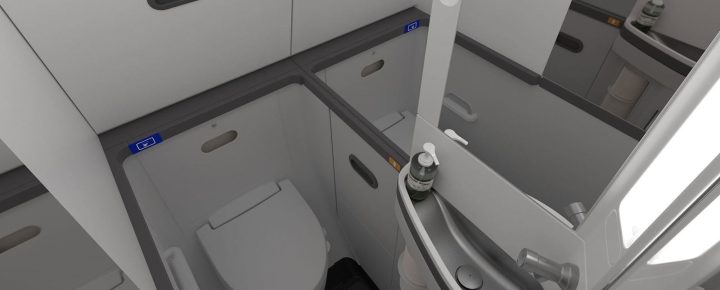


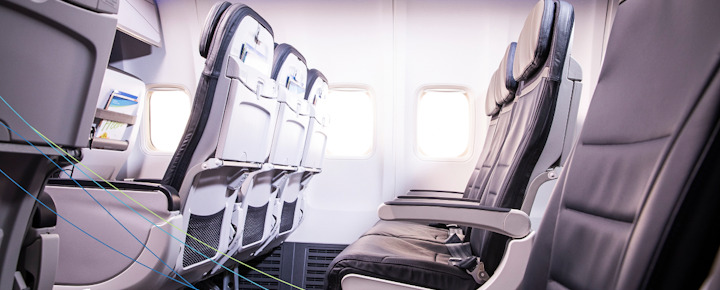
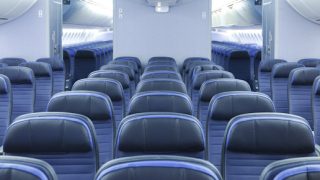
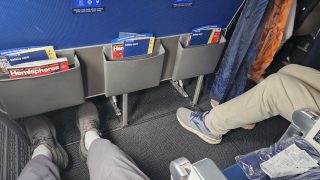
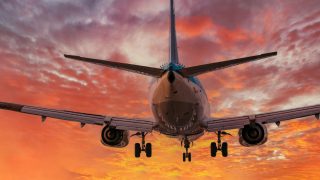
For what it’s worth, I wrote a complaint describing these “compact lavatories” to the Dept of Transportation in DC. I recently listened to a broadcast on NPR that talked about the airlines reducing seating space for passengers. It began after the government deregulated airlines. Gov’t hoped that it would promote more competition and avoid monopolies (HA!). I don’t necessarily want more regulation, but sometimes it’s important to have. (eg. Food and Drug Adm.). Writing to the individual airlines will do absolutely nothing.
What about overweight passengers who already find the lavatories a snug fit and passengers with disabilities. There must be at least one accessible lavatory on a flight to avoid discrimination issues.
The airlines are asking for more out-of-control passengers with this b/s.
I’m a colorectal cancer survivor wearing an ostomy bag. I need my wife to help me if it fills up. On wide bodies, the crews will join two lavs together for me. Not possible on the A320 series. So, we now fly exclusively from Ontario and take the HA nonstop flight – so no breakfast at home that morning and nothing to eat on the plane. For me, the biggest problem is the lavs placed at the curvature of the fuselage. So, if you are a man trying to stand there to urinate or, in my case, empty my bag, it’s impossible. Unless you are 5’2″
Will they ever learn? By flying in record numbers, we are only encouraging them.
The lavs on the Hawaiian Airlines A330 that I flew on were a decent size; I have not tried one of their A321neos yet. However, I flew on a Delta A321neo–a relatively short flight–and used a lav located near Delta’s Comfort+ cabin, and it was Tiny! It was really kind of hilarious! Wonder how it compares to Hawaiian….?
Hi Shirley.
The Hawaiian 321 lavs are somewhat bigger than the newest mini “compact” ones on the Delta planes that are easily 3-4 years newer than Hawaiian’s. Not sure the compacts were even available back five years ago when HA took delivery. The A330 lavs are the best of their fleet for sure.
Aloha.
I work in the complaint department for one of the airlines mentioned and I haven’t seen the “endless” complaints described. In fact, I haven’t seen one complaint. But I’m confident that’ll change: there’s no end to what first-world people will complain about.
Airlines have become a victim of their own success at operating an unsustainable enterprise. Unless we can figure out how to transport people quickly over great distances without burning hydrocarbons, then anything less than finding new ways to transport more people while burning less carbon would be immoral.
Immoral? While the politicians blab climate change but have their own planes?
“Climate change” is nothing more than a money grab by politicians and those who already have more money than God.
What happens to those folks who are truly overweight.
Hawaiian Air’s A321 lavs are full size. Nothing like the 737max.
The good news is that the space is too small to fall down. We cannot keep driving the tourist industry to more and more (tourists, profit, destinations) and expect the corporations to avoid squeezing every millimeter they can out of every flight. It is in their DNA. Of course, they care about their customers. But not as much as their bottom line.
I hear a lot of people who are saying that travel has become so distasteful that they are going to limit their flights. It will eventually show and some airlines will have to change or die. I hope.
Hi Rob+Jeff. I never thought about how hard it would be for a disabled person to use an airplane bathroom. It’s already a squeeze for able-bodied passengers. I think the flying public should have a say in this “small concept” idea. When the profits go down from people’s choice to fly, the CEO’S still won’t understand why. Action creates change. Thanks for all your fine reports and I might have to lose a few lbs before I get on the plane in 2 wks. Happy Holidays to you both.
Hi BOH family,
I am 6’5″ tall and flew all over the US earlier this year on Southwest (using points).
I got to expirence the tiny bathroom and wow was that a challenge both to stand up/bent over and unrinate with turbulence and to wash my hands. I smacked ny head a few times to be honest. Not sure what we can do as passengers. Do we even have a voice?
Hi Kevin.
Yes we feel your pain. The developments in restrooms appear focused on accessibility instead. That is sorely needed of course, but it doesn’t address what you experienced.
Aloha.
I don’t think I’ve had the “pleasure” of experiencing one of these compact lavatories yet. The non-compact ones are bad enough. As long as we keep flying in droves – and you have to, to get to Hawaii – there is no incentive (other than government regulation) for the airlines to stop treating passengers like cattle. Flying has become completely unpleasant unless you’re in lie-flat business or first class on a long haul flight – on a good airline. Thanks for sharing all the news, good and bad!
Hi Glenna.
Thanks. Yes, the old ones weren’t great, but we also never gave them much thought. When you meet one of these, however, you’ll certainly recognize it immediately. Larger people could find this virtually impossible to use it seems.
Aloha.
I don’t enjoy flying, ever, to anywhere. It is just the most convenient and expedient way to get from the islands to the mainland and back. It is a huge hassle and if my grandkids and kids weren’t there, I would never fly! Ever! They cram you in, you are supposed to smile and be patient, no matter what kind of moronic circumstances are causing your hours, days, long delay. Heaven forbid someone acts like a complete fool after takeoff and you have to turn around. I flew a short, inter-island flight 2 days ago and just about every single person on the flight was coughing or sneezing, no masks in sight. Now they want to make the lavatories even smaller? Pretty soon they will charge for using them! When will it end? Stop flying!
Teresa, don’t give them any ideas. However, they’ve probably already thought about charging a lav fee. It appears these days that animals are treated better than humans. Sad. 🙁
Hi Pam.
The animals are for the most part in the cargo hold. Don’t give the airlines any ideas. LOL.
Aloha.
I spent too long in the corporate world. I see restaurants, bars and theaters where they sell food at a loss and make profit on drinks. Or grocery stores which do the reverse – make their profit on soft drinks or alcohol and sell groceries at a loss. Or industry where they sell software at a loss charge for “advanced” features. These are “loss leaders”. In the public sphere Hong Kong provides almost free transportation by leasing the space around their transit stations. My point is that with different – and non-greed based – price structures travel could be ultra low cost and made enjoyable. Airlines are this way because we allow them to structure themselves this way.
What are they going to do about all the urine that will end up on the floor? Such a small bathroom might b ok for a man but not a woman or a parent taking their child to the bathroom
Things are likely to get very foul very fast in these labs.
When I read the Beat of Hawaii article about the United Airlines trip, they mentioned the small/tiny restroom space. I thought how could the airlines do this in respect to the ADA – American w/Disabilities Act. Is the small restroom compliant? Younger travelers will never experience what jet travel was like in the late 20th Century.
I’ll “Cattle Car” anywhere in the contiguous 48 but flying home to HNL I always spring for premium economy going (since you arrive in the afternoon) and either do the same on Hawaiian going back but stopping for a couple days in LAS to recover before continuing, or first class nonstop to ATL or DFW to take advantage of the lie flat seating so I can get some sleep and continue to destination and drive home. It’s expensive but worth it in IMO.
I realize that this isn’t viable for everyone but it’s how I deal with the amazing shrinking spaces and service you encounter nowadays. FWIW – I always bring my own food too – even in first!
Not going to go over very well from the people of size. Unfortunately they fight now to fit into seats, now bathrooms. What’s next from the airlines to sell, in flight diapers!
We’ve been flying to Maui every other year since 1968, and the airlines have made it more uncomfortable year after year. I remember my first flight in 1968 on a Pan American 747. It was our honeymoon, and we were 10 minutes late boarding the plane in S.F. The crew held the plane for us, and then gave us a small wedding cake and a small bottle of champagne. How things have changed…..for the worse.
Here is a Federal Law I could get behind: airline executives, and their immediate family, must use their lowest class of service their airline offers for personal and official travel. And they must make a minimum of 3 round trips per year.
Hi Jeff.
Funny. In terms of class of service, don’t they fly either first or private?
Aloha.
“…as a way to save money by making room for more seats on income-starved airlines.”
Income starved? I think not. Airlines have been pulling in record profits.
Hi Patrick.
Is it ever enough though? Based on what we’re seeing in the air, it isn’t.
Aloha.
Especially from the feds who keep feeding the airlines with billions!
It won’t be long until you need to pop a squat that they’ll have us standing outside the restroom door, drop your drawers and back into the restroom and hope the door will shut and lock!